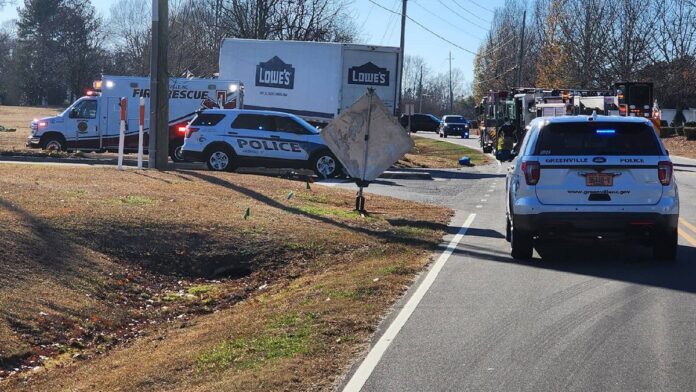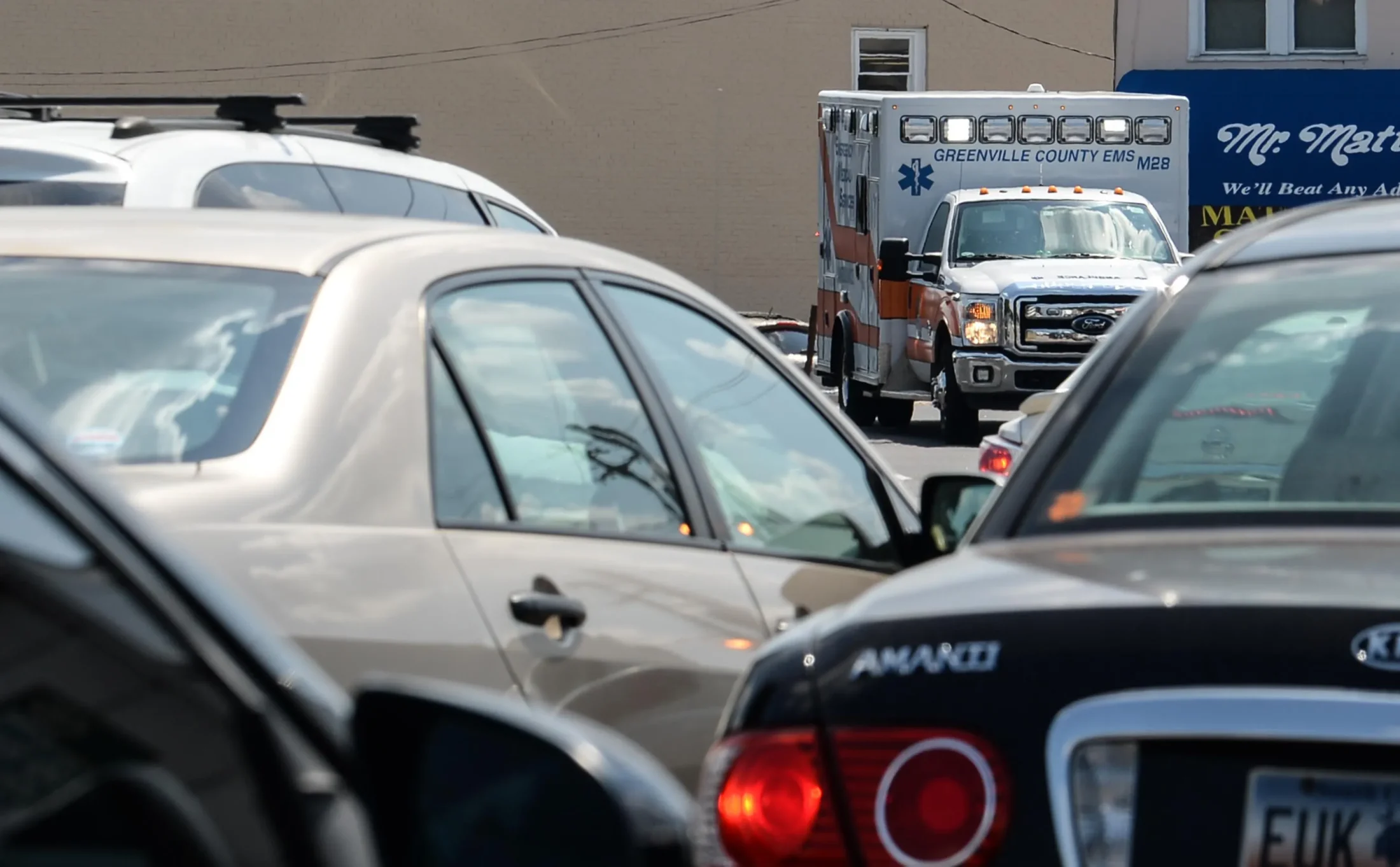Weaving through the traffic-packed streets of Greenville, you might wonder about the chances of getting involved in a car accident. Here, we delve into an extensive exploration of vehicular mishaps in this city, in the hope of dispelling fears and providing you with necessary precautions.
This deep dive uncovers the data behind auto collisions, revealing patterns, and contributing factors.
Statistics

Peering into Greenville’s numbers, the statistics paint a compelling picture. Within the city, in 2022 alone, over 3,000 vehicular accidents were reported. This signifies that approximately eight incidents happened daily, transforming the theoretical into a tangible, daily reality.
For every thousand inhabitants, six were part of an auto collision last year. The figures undeniably raise eyebrows, considering the city’s population barely surpasses half a million. What’s more, these numbers have shown an upward trajectory over the years, demanding a more in-depth examination. One thing that is true for all of them is the need for a Greenville car accident lawyer whose help is invaluable.
Types of Accidents
Greenville’s mishaps predominantly fall into three categories: rear-end collisions, side-impact crashes, and single-car accidents. Rear-end collisions account for a staggering 45% of all incidents, often due to inattention or following too closely. These accidents, while usually less severe, do result in significant property damage and potential injuries.
Side-impact crashes, often occurring at intersections, represent a significant portion of accidents, nearly 35%. These mishaps, colloquially known as ‘T-bone’ accidents, are typically more hazardous due to the limited protection offered by the sides of vehicles. Single-car accidents, involving only the driver and their vehicle, fill out the remaining 20% and are most commonly due to driver error or hazardous road conditions.
Analysis of Severity
When examining the severity of Greenville’s accidents, it’s key to understand the contributing factors. An astonishing 70% of incidents result in minor injuries or property damage only, a testament to modern safety measures in automobiles. These accidents often involve slower speeds or glancing impacts, reducing the potential for serious harm.
The remaining 30% of incidents, however, present a more concerning image. Severe injuries or fatalities occur predominantly in high-speed or side-impact crashes. Tragically, 3% of all accidents in Greenville proved fatal last year. It’s these statistics that reinforce the necessity of safe driving habits and continual vigilance on the road.
High-Risk Areas

Certain regions in Greenville see a disproportionate number of vehicular incidents. Interstate 385 and U.S. Route 29 are particularly prone to mishaps, primarily due to high traffic volumes and complex interchanges. The intersections and merging lanes in these areas often become hotspots for fender-benders and more serious collisions.
Looking beyond the highways, downtown Greenville also sees a high incidence of collisions. Here, the concentration of vehicles, pedestrians, and complex traffic patterns creates a fertile ground for accidents. The corners of Main Street and Washington Street are particularly problematic, often leading to side-impact or pedestrian-involved incidents.
Comparison with Previous Years’ Data
Reflecting on past data, we can discern alarming trends. In comparison to the preceding year, 2022 has seen a 5% increase in total auto incidents. Despite advancements in vehicle safety and traffic management systems, these numbers suggest that other factors are at play, potentially linked to the city’s rising population or changing driving behaviors.
Taking a longer view, over the past decade, the annual auto incidents in Greenville have risen by an alarming 20%. This trend line demonstrates a need for proactive measures to enhance road safety. From traffic infrastructure to driver education, there’s an evident need for decisive action to buck this trend.
Time and Seasonal Patterns
Delving into the temporal patterns, weekdays between 3 pm and 7 pm are prime time for vehicular incidents. These peak hours, coinciding with the end of the typical workday, mix high volumes of traffic with fatigued drivers, often resulting in mishaps. Interestingly, Fridays witness the highest frequency, possibly due to the anticipation of the weekend affecting driving behavior.
Seasonal patterns are equally intriguing. Winter, particularly December, and January, sees a spike in accidents. The mix of holiday traffic and inclement weather conditions often make these months hazardous for Greenville’s drivers. Conversely, the warmer months report fewer incidents, underlining the impact of weather on safe driving conditions.
Demographic Trends

Scrutinizing the demographic trends in Greenville’s auto incidents reveals some notable patterns. Young drivers, particularly those aged between 18 and 25, are disproportionately involved in accidents. This age group, despite making up just 15% of the driver population, is responsible for almost 30% of accidents.
In contrast, drivers aged 50 and above are less likely to be involved in auto incidents. This group, making up about 40% of the driver population, is responsible for only 20% of accidents. These patterns underscore the importance of experience and caution in maintaining road safety.
Role of Weather Conditions
Greenville’s weather significantly influences the frequency and severity of auto incidents. Rain, unsurprisingly, plays a significant role. Precipitation reduces visibility and road traction, leading to a 25% increase in accidents during wet conditions. These incidents are often more severe due to the increased stopping distances required on wet roads.
Moreover, winter months marked with snow or ice present their unique challenges. Slick road conditions increase the likelihood of single-vehicle accidents and multi-car pileups. Notably, despite the challenges posed by poor weather, the majority of incidents in Greenville still occur during clear weather conditions, suggesting that driver behavior is a more dominant factor.
Common Causes
Distraction, speed, and impairment stand as the triumvirate of mishap triggers in Greenville. Distraction, primarily due to mobile phone usage, contributed to 30% of accidents last year. This underscores the importance of focused driving and the potential danger of digital devices.
Speeding contributed to an alarming 25% of incidents. The allure of open roads or the rush to reach a destination often pushes drivers to risky speeds. Impaired driving, whether due to alcohol or drugs, contributed to 15% of accidents. Despite ongoing campaigns against drunk driving, its impact remains significant.
Impact of Distracted Driving

Distracted driving, particularly due to mobile device usage, has seen an exponential rise in contributing to incidents. Last year alone, distraction-related mishaps increased by 10% in Greenville. This rise aligns with the growing ubiquity of smartphones, demonstrating the potential dangers of technology when misused.
Distracted drivers not only pose a risk to themselves but also to other road users. A distracted driver’s reaction time can be equivalent to that of a driver at the legal limit for alcohol consumption. This stark comparison underscores the urgent need for education and legislation to combat this growing concern.
Final Reflections
As we reflect on the reality of car accidents in Greenville, it’s evident that each figure and fact hides a story of personal experience, often marked by tragedy or loss. This analysis serves as a wake-up call to individual drivers and the community, urging us to prioritize safety.
Each of us can play a part, whether through responsible driving, supporting local traffic initiatives, or fostering a culture of road safety. By understanding the patterns and causes, we can begin to reverse the trend and make our streets safer. Through collective action and individual responsibility, Greenville’s streets can be a place of safety rather than statistics.









